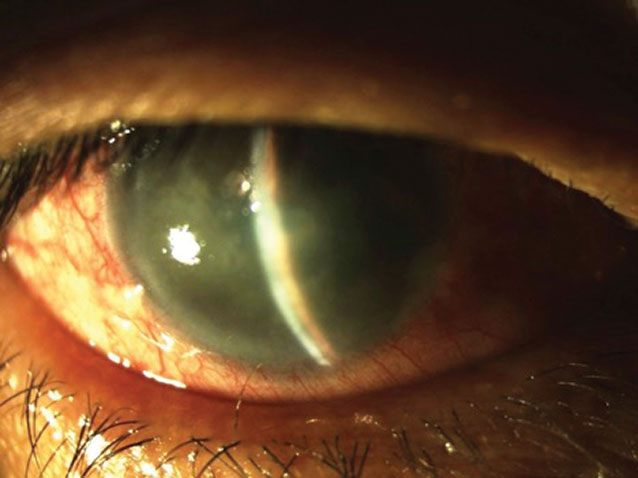 |
| Although sulfa-based drugs are sometimes associated with angle closure, this work found no elevated risk with use of diuretics. Photo: Joseph Sowka, OD. Click image to enlarge. |
In a new study published in Ophthalmic Epidemiology, researchers examined the possible link between acute angle closure (AAC) with use of diuretic agents and found there was no increased risk.
A case-control study was conducted among a cohort of 713,574 diuretic users. A total of 1,553 cases and 6,212 controls were identified. Cases were mostly female (65.4%) and more likely to have been prescribed acetazolamide and sulfasalazine in the past year. For each case, four controls were selected and matched to the cases by age and sex. A logistic regression model was used to compute rate ratios adjusted for the drugs topiramate, bupropion, sulphonamide antibiotics, acetazolamide and sulfasalazine.
The study shows that current use of diuretic medications when compared to amlodipine use did not show an elevated risk of AAC.
“All thiazide diuretics as well as furosemide—a loop diuretic—are sulphonamide-based medications. The connection between sulphonamide-derived drugs and secondary idiosyncratic AAC is well established in the literature, lending to a theory that the proposed diuretic-associated risk may be attributable to their sulphonamide components,” the authors explained in their article on the study. “However, our data show that neither thiazides nor loop diuretics are associated with increased rate ratios of AAC, despite statistically significant differences in use of other sulphonamide-based drugs like acetazolamide and sulfasalazine between cases and controls in our cohort.”
According to the authors, this is the first epidemiologic study to date to examine the risk of AAC with diuretic medications, but there were some limitations. The nature of the data did not allow access to patients’ records to confirm AAC diagnosis or verify whether it was unilateral or bilateral.
“As with all ambulatory care databases, written prescription records may not necessarily indicate actual drug intake,” the authors explained in the paper. “In addition, it was not possible to ascertain the indications for the prescription of acetazolamide, a drug that has both an idiosyncratic etiologic association with AAC and a therapeutic role in the treatment of this condition along with many others.”
Future studies with accurate adverse event reporting would further clarify the incidence of this rare but serious and potentially blinding idiosyncratic reaction, the team argued. “Drug product warnings may be warranted based on the seriousness of the risk of AAC,” they noted.
“However, this should not necessitate asymptomatic screening due to the idiopathic nature of the reaction and inability to predict who will be clinically impacted.”
Qiao GL, Mikelberg FS, Etminan M. Use of diuretics and risk of acute angle closure: a case-control study. Ophthalmic Epidemiology. October 3, 2023. [Epub ahead of print]. |

